After not spending a weekend at home in about 6 weeks, I was in two minds about my planned trip to the Western Cape. Eager to photograph a few species I don’t often see but anticipating the end of the incredibly rushed and meticulously planned out trip to Robertson in the Western Cape.
Robertson is a small town established in 1853 the centre focus of the town is wine it’s known to be right in the centre of the Western Cape wine district. Along with vineyards, there is a wide array of fruit orchards around the town – with really reasonably priced fruits and nuts. There were a few surprises along the way too.

Arriving at Cape Town International Chris and Melanie were already waiting and we set off for something a bit different at Milnerton Beach to scratch around for some fossils. Which is theory is great but the water was freezing we had mild success with a few bone fragments but no full shark teeth this time.
We stocked up on some water and snacks and headed out towards Robertson some 140km’s by-passing Worcester, the thing about this part of the country is that you don’t really see a mountain it’s almost as if you’re continually surrounded by what seems like never ended valleys and rocky ridges. After arriving in Robertson the standard issue of getting some things together for dinner most importantly is a constant stock of 5 Roses tea (nothing else matters!)
Shortly after a good dinner, we headed out to get one of the first “key” specimens I really wanted to see and photograph in the Western Cape. We arrived a rather insignificant patch Acacia Karroo Trees after searching around a bit, getting impaled and finding what appeared to be a few of the locals local sleeping quarters/tavern and toilet all in one place, eventually managed to spot the first Dwarf Chameleon of the night.
The Little Karoo Dwarf Chameleon – Bradypodion gutturale.
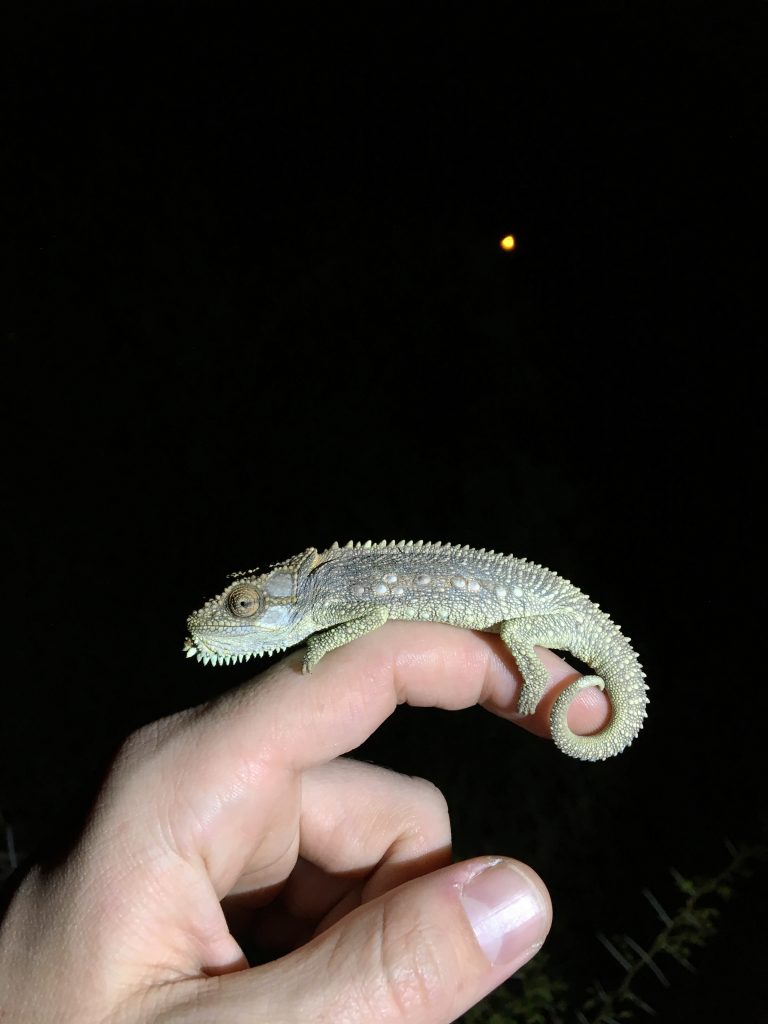
First species of reptile for the trip!
It’s not the first time I’ve seen this species (well apparently not – depending who you ask) a few years ago myself and good friend Sam found a few on the old pass between George and Oudtshoorn but those could quite possibly be a new/undescribed species but that’s a story for another day.
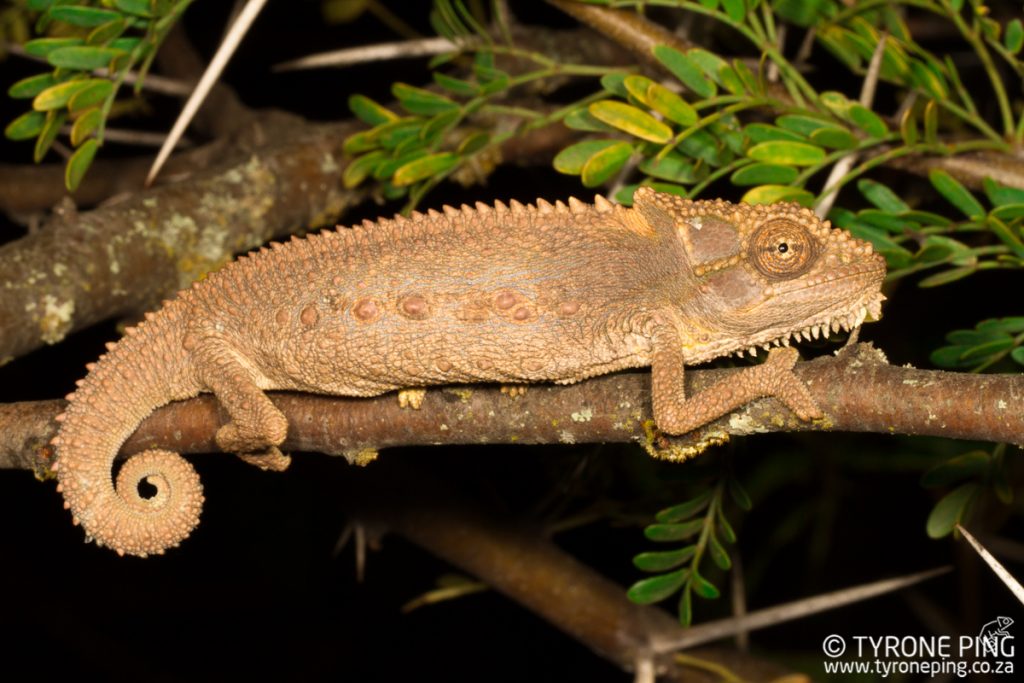
Little Karoo Dwarf Chameleon
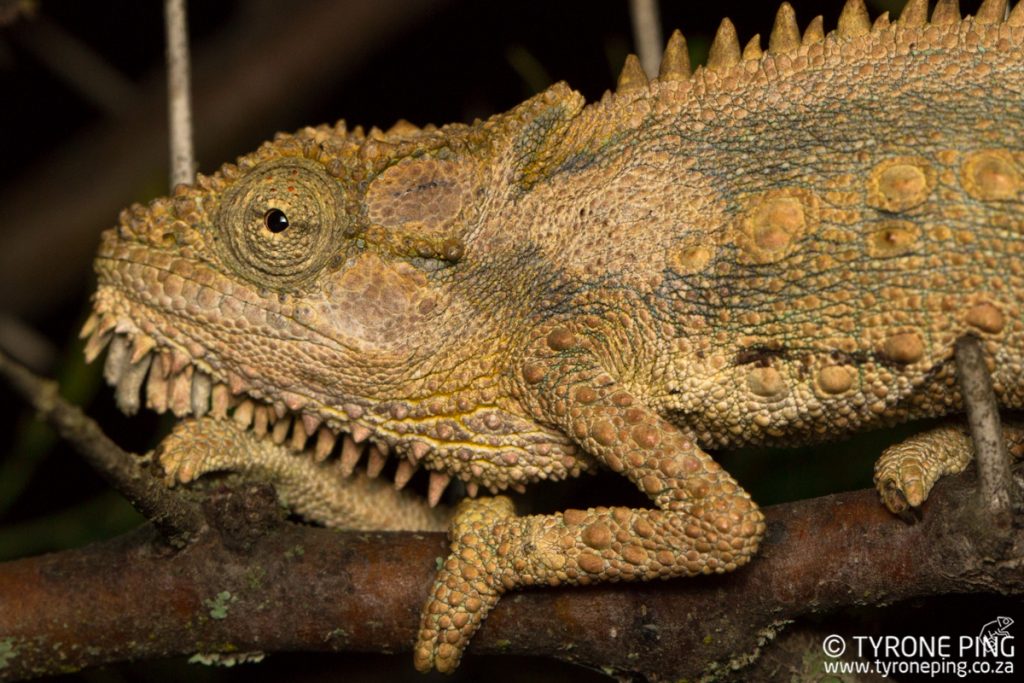
Adult Male – Little Karoo Dwarf Chameleon
Good things tend to come in three’s and within quick succession, we’d managed another two. Another a few photographs together with the cold and multiple thorn pricks we decided to call it an evening.
Setting off early (somehow) Chris has convinced me to go look at a spot in Swellendam where he’d seen some Dwarf chameleons a few times during the day on some hedgerows and all bushes around the town. Interestingly enough there shouldn’t really be any chameleons in the area but this show resemblance to the Knysna Dwarf Chameleon but genetically they differ so that species is up in the air.
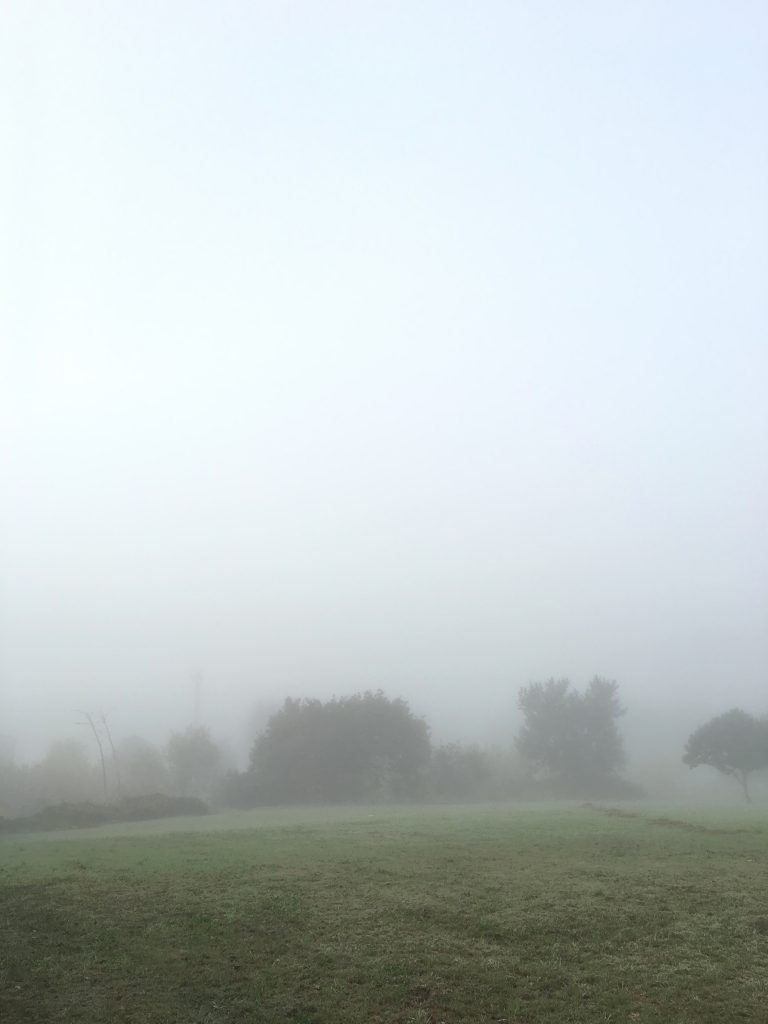
Trying to locate chameleons in the day really isn’t ideal/great or actually a remotely good idea. Generally speaking, you’re just really lucky if you can spot one moving on the vegetation – this trip is way too short for luck. But fortunately after about an hour more dew soaked shoes I managed to find a single specimen relatively high up on a small tree and managed to get it down without much hassle.
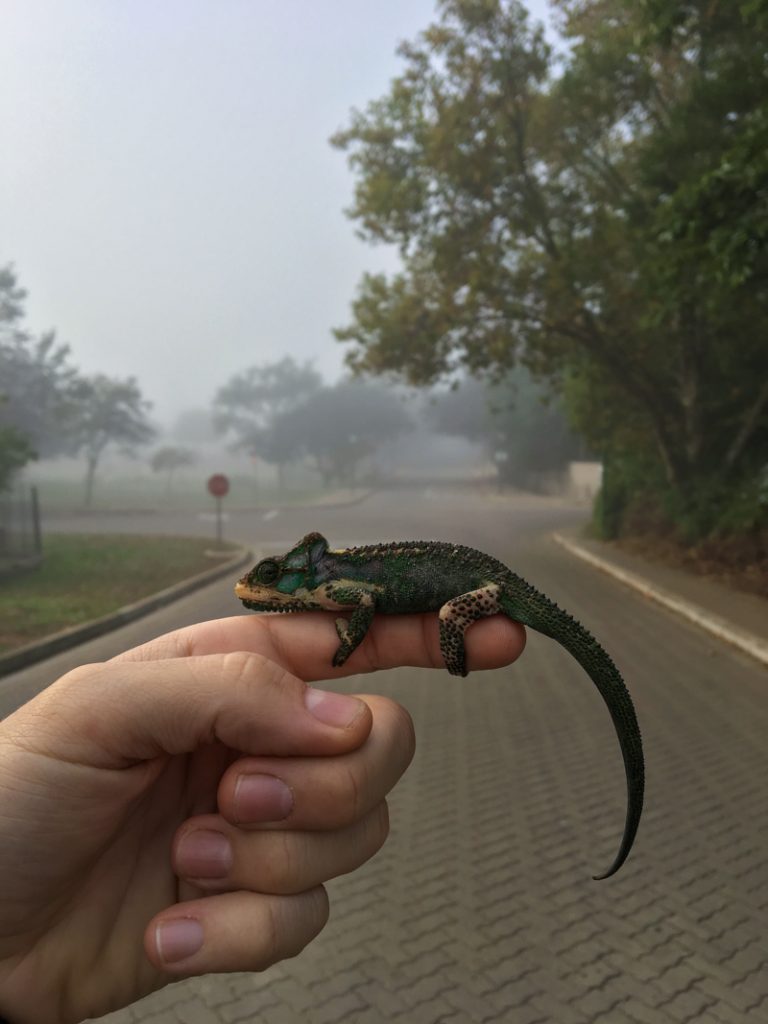
Persistence pays off.

On route to Bredasdorp.
[caption id="attachment_7602" align="alignnone" width="1000"]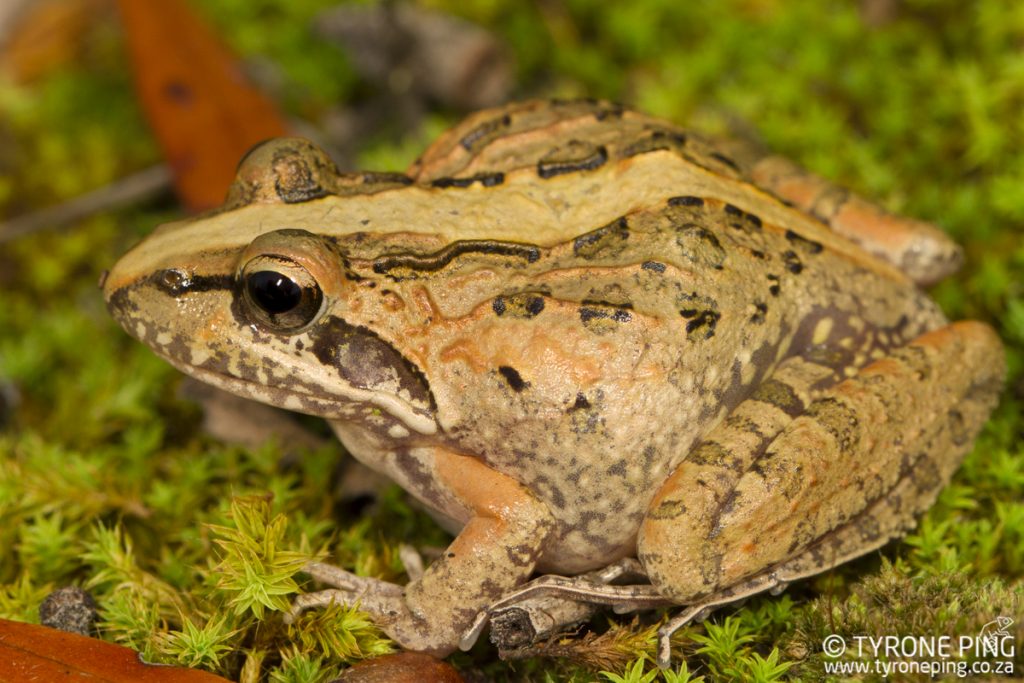 Clicking Stream Frog
Clicking Stream Frog
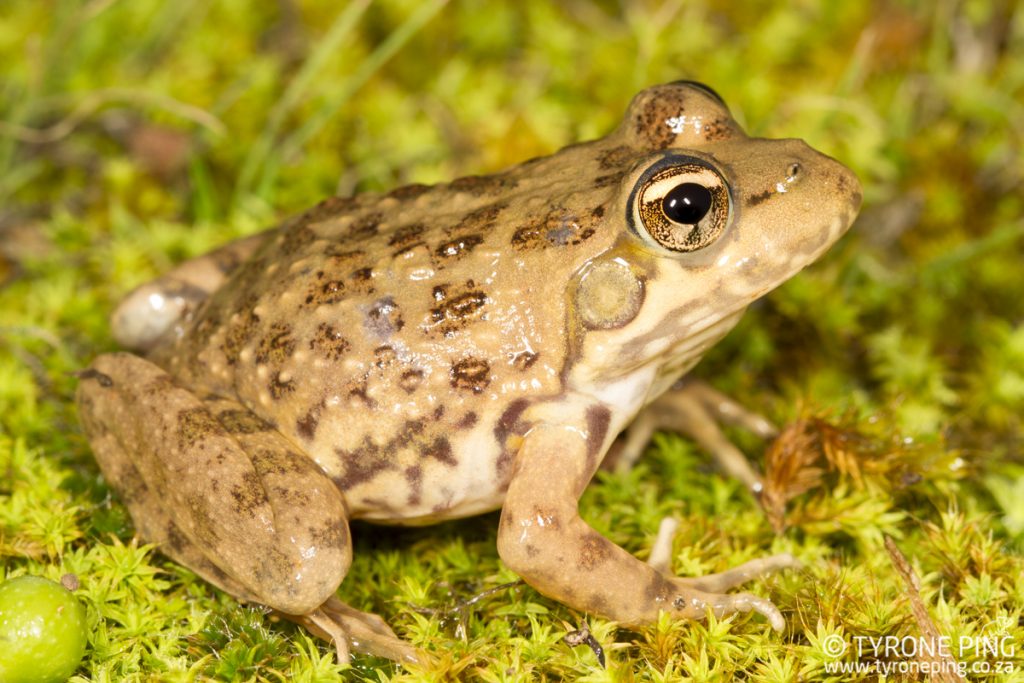
Cape River Frog

Crotaphopeltis hotamboeia – Herald Snake.

Bradypodion sp (Grootvaderbosch)- Dwarf Chameleon
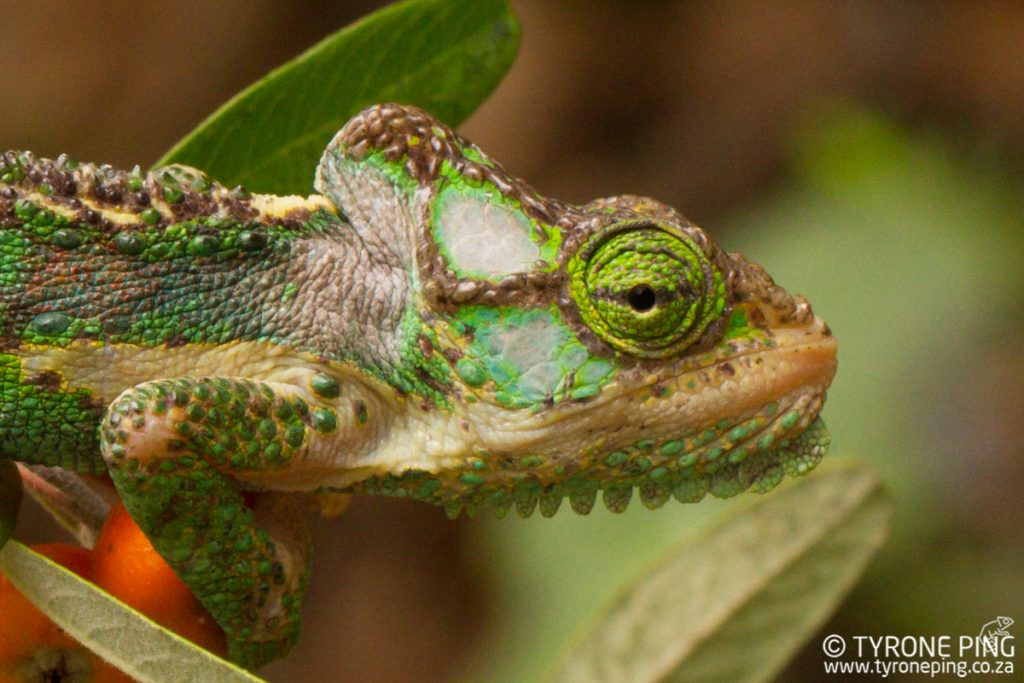
Bradypodion sp (Grootvaderbosch)- Dwarf Chameleon
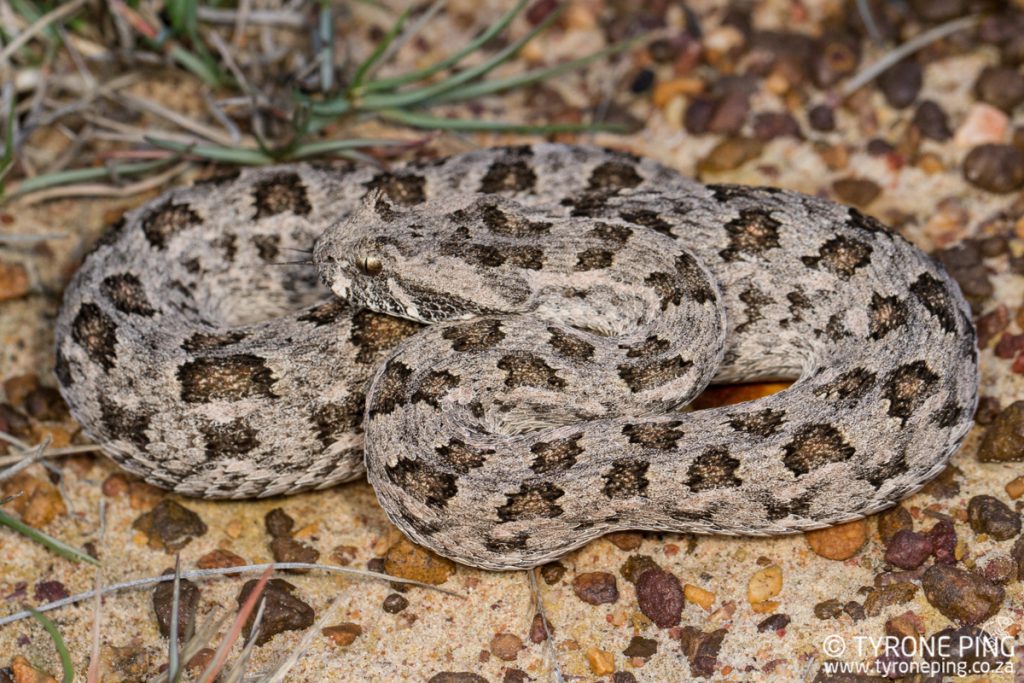
Bitis armata – Southern Adder.

Bitis armata – Southern Adder.
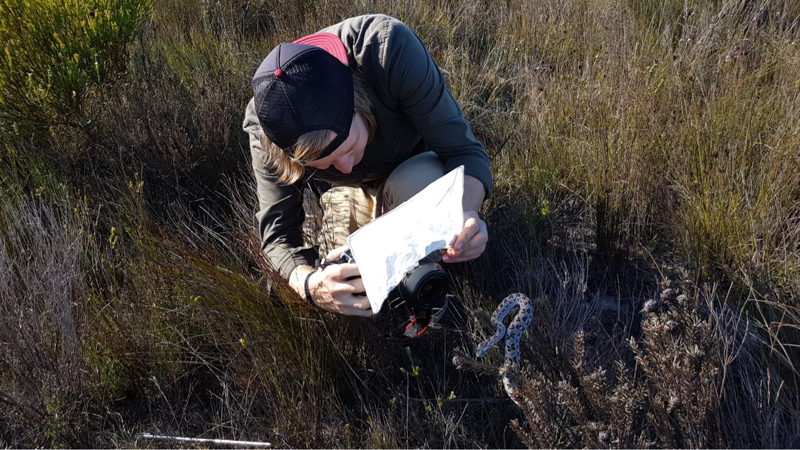
Photographing a Southern Adder. Photo Gerrie Heynes
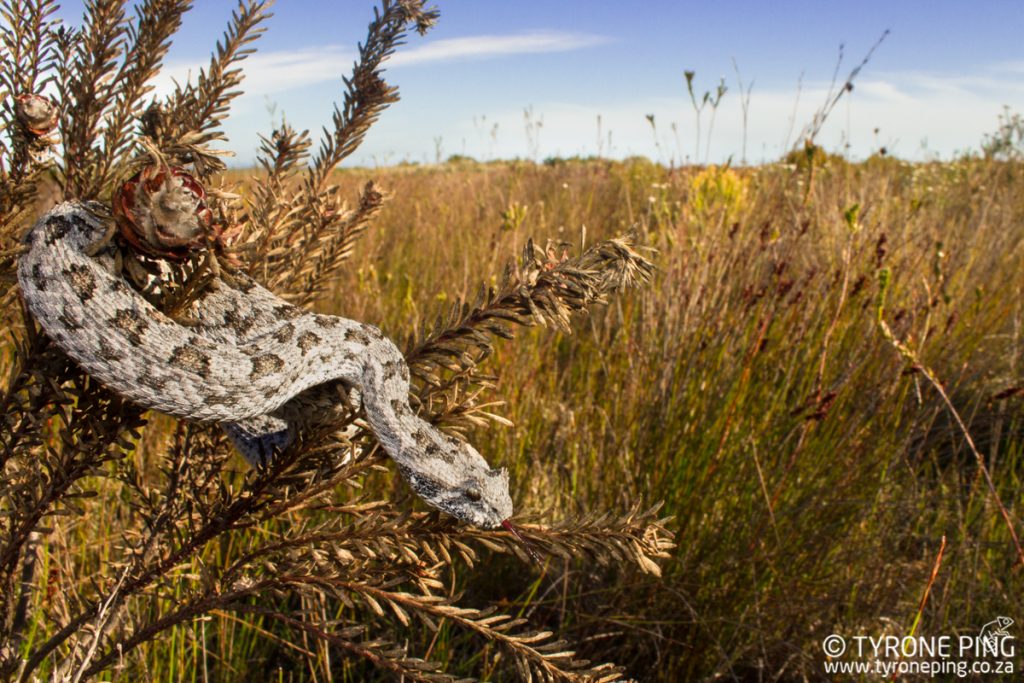
The result – Bitis armata – Southern Adder.
After the afternoon spent on the coast we heading back to Robertson and the mountains for a much needed photoshoot and scratch around for a few more animals before I headed out the next day.

Back to the Mountains

Bradypodion gutturale – Little Karoo Dwarf Chameleon.

Another Adult male – Little Karoo Dwarf Chameleon.
A nice wind down was a very brief encounter with a small Cape Cobra, the window period for the afternoon light is always so small but the feel is always something you chase after buta . few minutes can really make a huge difference.

Naja nivea – Cape Cobra.
Case in point, after a few minute si switched to a new Tokina 12-24mm lens and although not a typical portait shot of a snake – wel certainly not how I photograph snakes and most reptiles in any case.
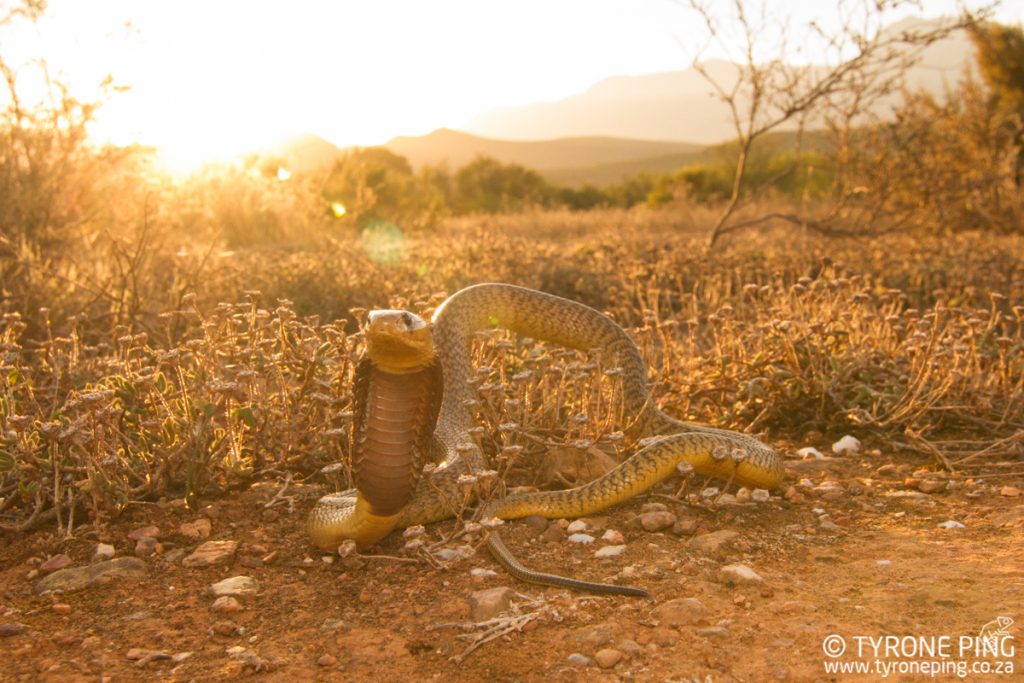
Golden Hour.
As quickly as it came the last few days went. A few hundred kilometeres a few new species and another bunch of photographs to process and index.
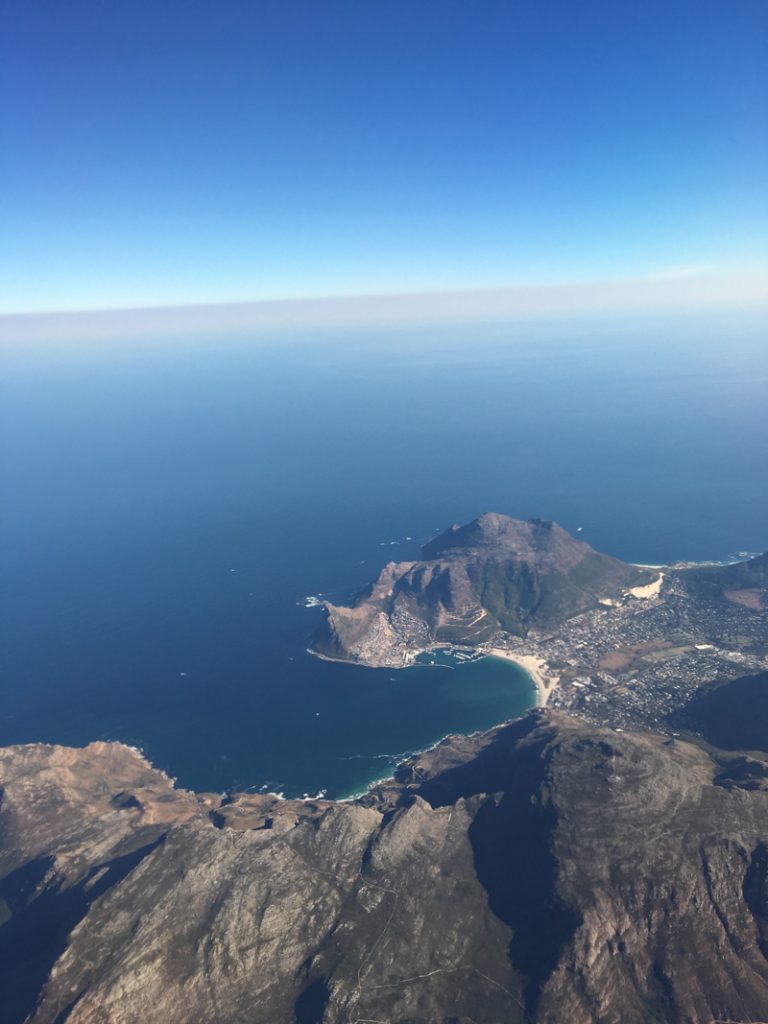
Heading home.
Thanks for looking – until the Winter rains see you later Western Cape.
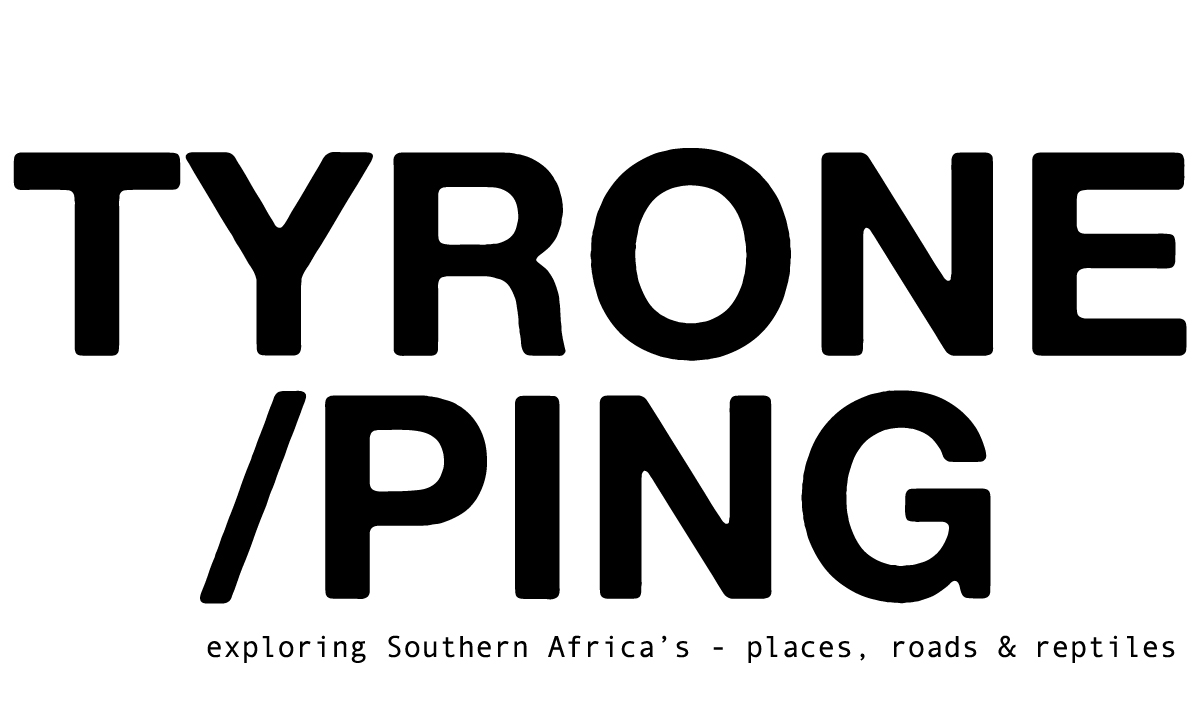
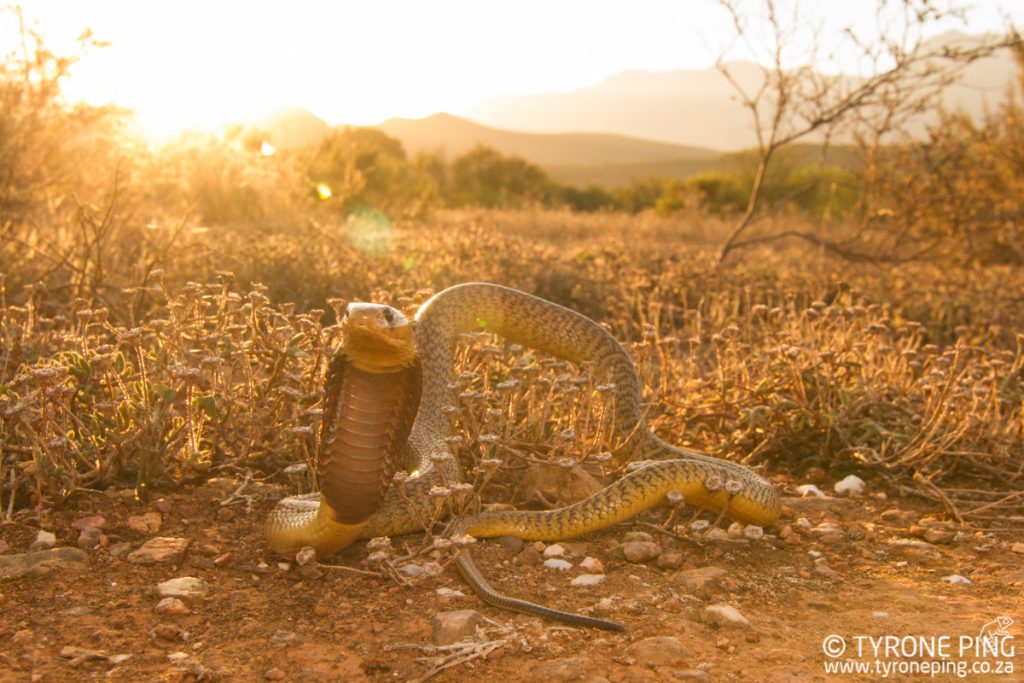
Can you tell me if Psammophis crucifer occurs in Oudtshoorn.? I believe this to be a mountain slope species, and would not be found in the Succulent Karoo habitat.
They sure do Peter, more common around the Swartberg than Oudtshoorn town itself.